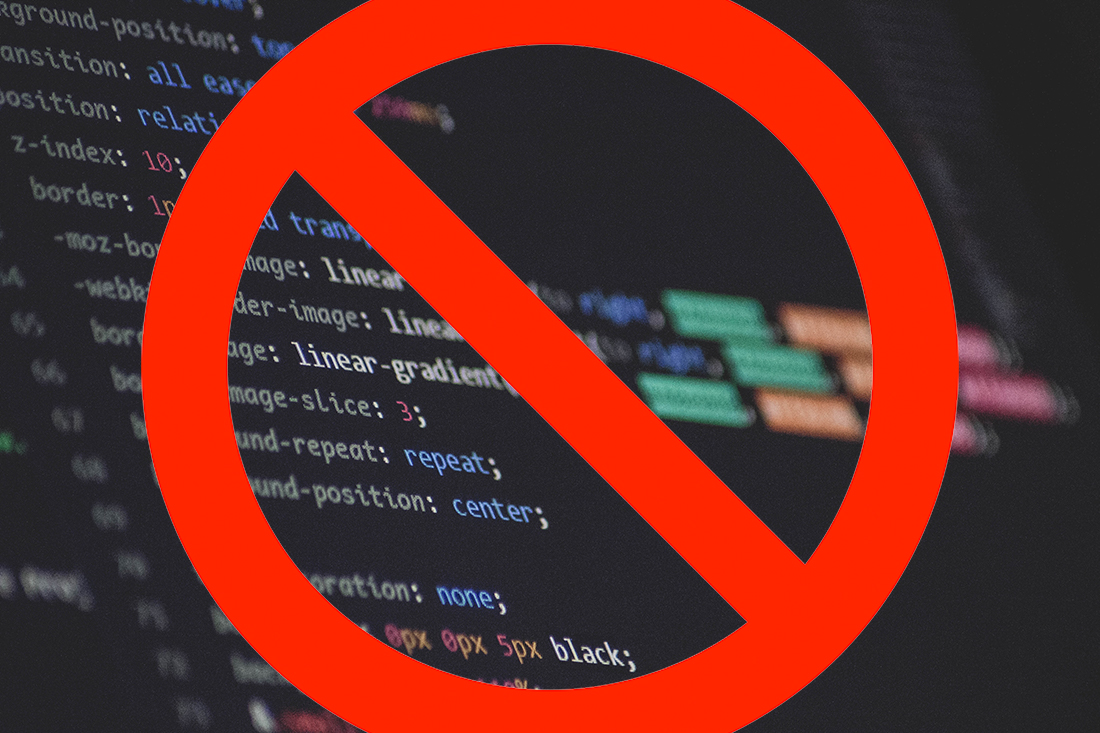There are a lot of people touting the value of “no code” website design right now.
Some of these people are companies that have built no code or low code website builders that are designed for small businesses and those that want a quick website.
Bigger platforms are starting to show some no code/low code elements. You could even argue that WordPress blocks are in this style of website design. Depending on your needs, you might be aligned with a no-code website build.
Here, we’re going to examine the no code movement and the pros and cons that come along with it.
What is the No Code Movement?

No code design is exactly what it sounds like. It is a development platform – or website builder – that allows you to create a website without coding skills.
A no code design platform often uses drag and drop tools and has a starter template that you use to create from.
There are a ton of these tools on the market and many tout one-stop solutions, including a website builder, domain registration, hosting, security, and sometimes extras such as email addresses or newsletters.
Prices vary for these platforms and services.
The no code movement is the wider acceptance and use of these design tools as a true website design and development option. Many designers and developers reject these tools in favor of code-based systems, although there are more hybrid (low code) options popping up that appeal to both citizen designers and more experienced developers.
The primary use of low code design tools is to help design teams work together to provide complex design and development needs and an easy interface for others to work in as well.
Pros of No Code Design

The obvious benefit of the no code design movement is that it opens up the potential of creating websites (and apps) to wider groups of people. You don’t know to know and understand the inner workings of website development to get a fairly simple site online in a reasonable amount of time.
But proponents of the no code movement can sell you on plenty of other benefits as well.
No code design pros include:
- Create design elements and workflows quickly
- Facilitates team development among those with varying design and coding skills
- Potentially lower-cost development with less time and specialized skills needed for the build
- Agile development that’s easy to adjust with drag and drop tools (for the most part)
- Democratization of web publishing
- Ability to get a usable and functional site online fast
- Many no code builders include some highly desirable tools such as the ability to include ecommerce, forms, or other popular features
- Visual design processes can spur greater innovation and creativity
- More members of your team van participate in the design experience, possibly providing better solutions to design problems or for client work
- Reduce costs for hardware, tools, and maintenance
Cons of No Code Design

While there are a lot of people jumping into the no code movement, there are just as many who don’t see it having more value or opportunity for them.
The biggest disadvantage of the no-code movement might be control. You can only do what the software or tool you have chosen can do. There are a variety of limitations with these builders and tools that often vary depending on which tool you use or what plan you have selected.
This can make it quite important to do plenty of research before hopping into a no-code project.
No code design cons include:
- Total costs of no-code platforms need to be considered in terms of time, with most plans including a monthly cost commitment for the lifetime of the design (with different features coming with add-on costs)
- Rigid templates and design options can limit function and creativity
- Security can be an issue depending on platform, tools, and number of integrations used
- You don’t “own” the code for the design; moving to another platform can become time and labor intensive
- Support and troubleshooting issues put you at the mercy of the vendor
- Many no code platforms are designed to create something and leave it, without a truly scalable solution that is easy to build on over time
- Data storage can get troublesome, and you may not be able to fully control data storage or use
- You can end up with too many people trying to influence a project if everyone thinks they can just hop in and work on the design
- No code builders and platforms can look like an “easy” or “cheap” solution for client work if they aren’t white-labeled, bring your rates or fees into question
- Websites and projects are mostly limited in size and scope with these builders, with exploding costs when things require anything beyond the template and there’s little room for agility to add something else
When Should You Choose No Code Design?
The no code design movement is a mixed bag for the most part. Highly touted by the companies that have created popular platforms, it can seem like a quick, easy, and inexpensive solution. But you need to do your homework.
Whether you choose a no code platform or not depends on the scope and scale of the project you are working on. For client projects, it can be just as important to know the client’s needs today and what they might expect in the future. (You don’t want to put yourself in a position where you have to say “the website tools won’t do that.”)
The consensus is this: If you are building a small, personal website, a no code solution can be great. You can get a build done quickly and amateur designers can finish a website fairly easily.
If you are building a large, ever-changing website, this probably isn’t the best solution. You will need the ability to adjust and scale that comes with a coded design solution.
Finally, there’s that place right in the middle. Some “no code” website builder tools have a coder option for custom elements. It’s not the same as doing it yourself, but you do get some increased design and function flexibility with this option. (If you find yourself stuck with a no-code website, look for a tool that offers a developer option.)
Conclusion
The no code website design movement has opened up greater opportunity to design something for a lot of people. It’s not really something that more experienced designers and developers need.
There are pros and cons to a code-free platform. You have to weigh them for yourself.
0 Commentaires